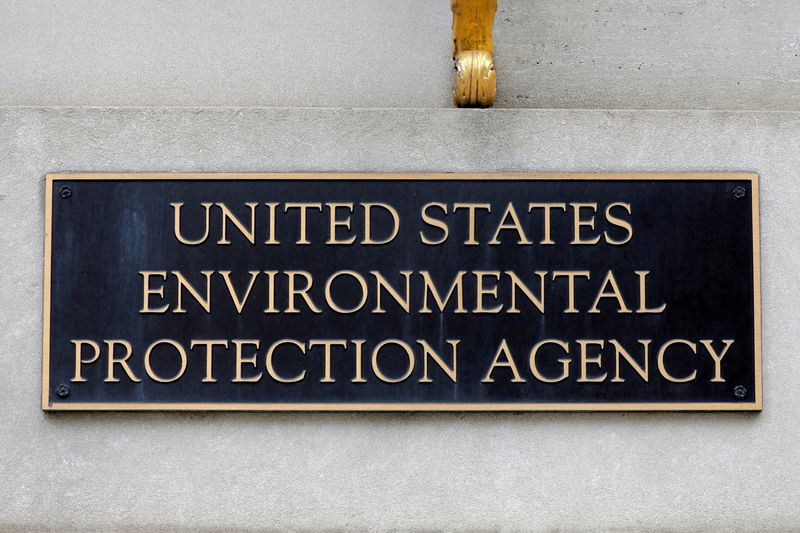US EPA finalizes rule to tackle interstate smog
2023.03.15 10:36

© Reuters. FILE PHOTO: Signage is seen at the headquarters of the United States Environmental Protection Agency (EPA) in Washington, D.C., U.S., May 10, 2021. REUTERS/Andrew Kelly
By Valerie Volcovici
WASHINGTON (Reuters) – The U.S. Environmental Protection Agency on Wednesday finalized a rule to require industrial facilities and power plants in 23 states to cut their smog-forming nitrogen oxide (NOx) emissions, one of several air quality and climate regulations it is due to unveil.
The EPA’s final “Good Neighbor” plan is expected to ensure that 23 states curb NOx emissions from facilities that pollute across state lines and meet obligations for the 2015 Ozone National Ambient Air Quality Standards (NAAQS).
Ground-level ozone, or smog, can cause respiratory and heart issues and can travel downwind across state lines, affecting over 127 million people. States ranging from New York to Texas to Nevada would be subject to the rule.
“EPA’s ‘Good Neighbor’ plan will lock in significant pollution reductions to ensure cleaner air and deliver public health protections for those who’ve suffered far too long from air-quality related impacts and illness,” said EPA Administrator Michael Regan.
The rule is one of several measures aimed at cleaning up power and industrial sector emissions that the agency is expected to roll out this spring. Other rules, including new greenhouse gas standards for power plants, are expected as soon as April.
Starting in 2023, affected power plants will participate in a revised ozone season trading program. The EPA would tighten emissions limits over time to encourage a phased installation of pollution controls from 2024.
The EPA will also require consistent operation of emissions controls to protect downwind regions and set a maximum daily emission rate for plants.
Beginning in the 2026 ozone season, EPA will set enforceable NOx emissions control requirements for existing and new emissions sources ranging from cement kilns to solid waste incinerators.
“We are pleased that EPA has responded to calls from overburdened communities to require pollution reductions from industrial sources in addition to power plants and to ensure the largest coal-fired power plants run their pollution controls every day of the ozone season,” said Kathleen Riley, a lawyer for Earthjustice.
EPA estimates the final rule will reduce NOx emissions by 70,000 tonnes during the 2026 ozone season compared to a business-as-usual scenario. It would also result in an annual reduction in carbon dioxide emissions by 16 million tonnes.








